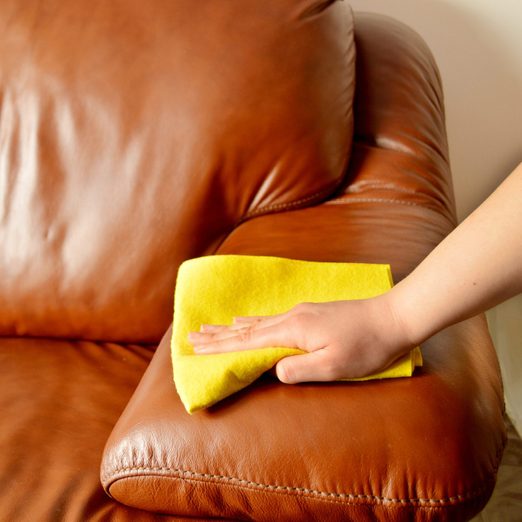Removing Stains on Leather Furniture With Natural Products
Updated: Sep. 13, 2023
Leave the harsh chemicals in the cupboard when removing stains on a leather couch or any leather in the house and find a natural remedy.
A full day
Beginner
Free
Introduction
These natural leather cleaning tips will make old furniture look new. The best part is you probably already have everything you need in the cupboard!Few things are as frustrating as finding stains on your leather furniture. Not only did you probably spend a decent amount of money on the piece, leather can be tricky to care for and it’s not as easy to clean as fabric. Fortunately, we’ve rounded up some tips to help you make your own leather stain remover and get your pieces back to looking great in no time.
Before reaching for harsh chemicals to act as a leather stain remover, try natural, at-home remedies. Always remember to check the furniture manufacturer’s directions first, and spot-test a small, hidden area to check for discoloration before applying any remedies to the whole piece.
Project step-by-step (8)
Vacuum the Couch
First, prep the leather stain surface by vacuuming all dust and debris off the surface and out of folds. You want to get dirt, dust, and any other loose debris off your couch so that you can focus on the stain.
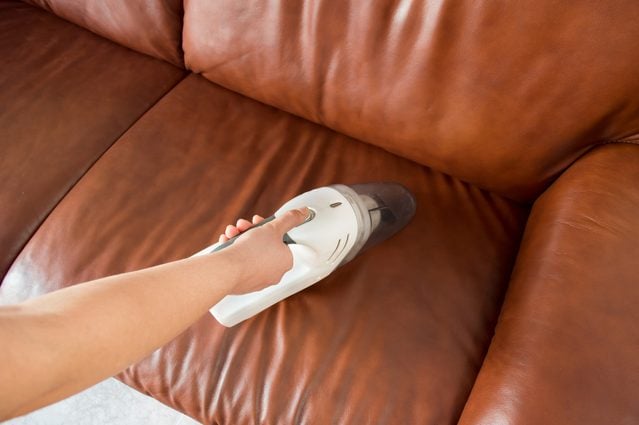
Start With a Damp Cloth
Next, wipe the entire surface down with a clean, warm damp cloth to remove all loose, surface dirt. Be gentle and move quickly – water can sometimes discolor unfinished leather. This helps prepare the surface for a more thorough cleaning process, ensuring that the leather is free from any surface grime or dust. Remember to avoid saturating the leather and always test a small, inconspicuous area before proceeding to ensure that the water doesn’t adversely affect the material.
Use Rubbing Alcohol for Ink Leather Stain
For ink-based leather stains, try rubbing alcohol. Dip a cotton swab in rubbing alcohol, and gently rub along the mark until the ink begins to lift. Change cotton swabs often to reduce bleed. Once the leather stain is removed, wipe away excess alcohol with a clean, damp cloth.
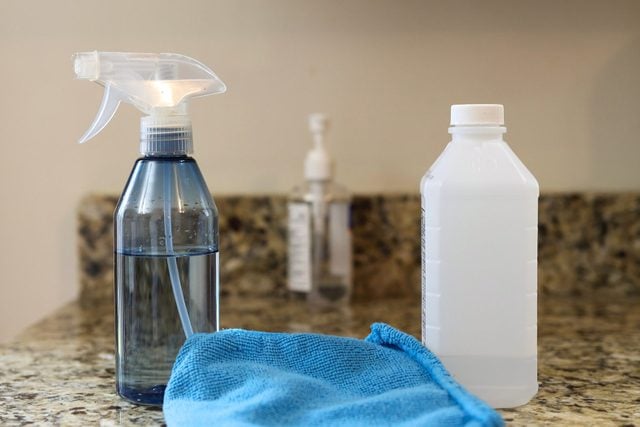
A Special Mixture for Protein-Based Stains
Certain stains require unique mixtures. For protein-based leather stains like food and blood, try a paste of 2 parts cornstarch to 1 part lemon juice.
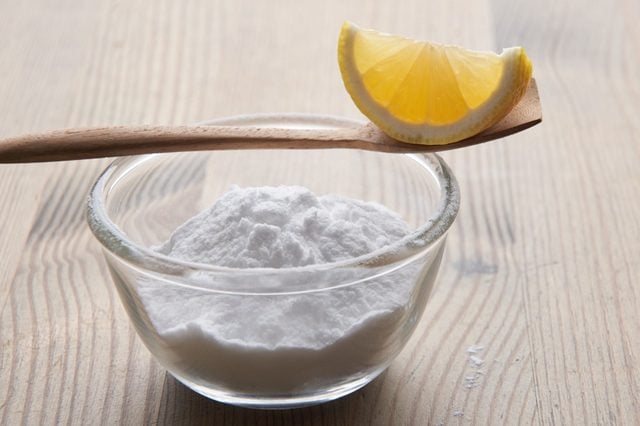
Use a Mild Oil on Scratches
For surface scratches, try erasing with a mild oil, like olive or baby oil. Dip a cotton swab in the oil and gently massage along the scratch until well covered. Let sit for 5 minutes and gently buff away excess oil with a clean, dry cloth.
Do an Overall Clean
Once the stain is up, you might want to do a full clean. To safely clean a leather couch and the entire surface, mix 2 parts white vinegar with 1 part olive oil in a spray bottle and shake well. You can also add a few drops of fragrant essential oils to cut the vinegar smell.
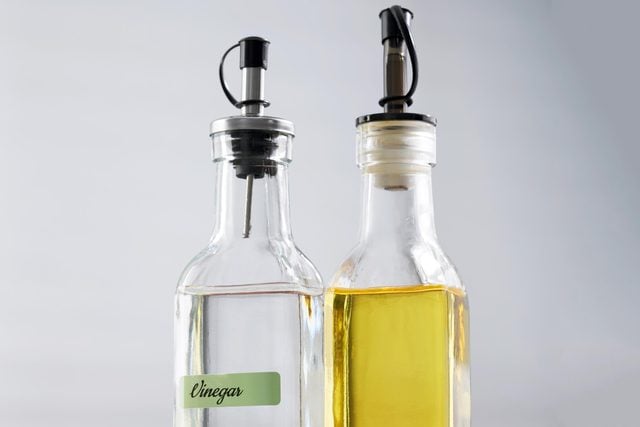
Be Generous With Spray
Spray generously and use a clean cloth to massage into a leather stain using a circular motion until the entire surface has been cleaned. A soft brush when learning how to clean leather can also be used to gently scrub problem areas. Then use a dry paper towel to wipe all excess oil off the leather.
Finish With a Nourishing Oil
To revive the luster of leather furniture and buff out small scratches and fading, try a natural leather cleaner like coconut oil. Use a clean, dry cloth to rub coconut oil into leather in a circular motion, much like shoe polish. Let penetrate 10 minutes, and buff out excess oil with a new, clean cloth.
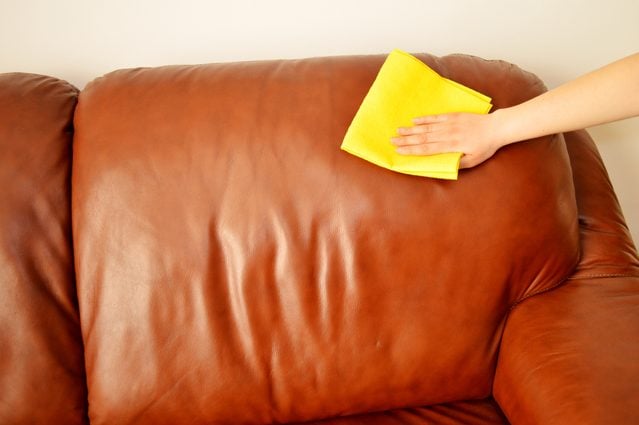
FAQ
Are water stains on leather permanent?
Water stains on leather need not be permanent, but addressing them promptly is crucial to prevent lasting damage. When water comes into contact with leather, it can leave behind unsightly spots or marks. However, with the right care and attention, you can often effectively remove these stains.
Begin by gently blotting the excess water with a clean, dry cloth. Avoid rubbing, as it can worsen the situation. Then, allow the leather to air dry naturally at room temperature. Never use direct heat sources like hairdryers or heaters, as they can cause the leather to crack or become discolored. Once the leather is dry, consider using a leather conditioner to restore its natural luster and suppleness. For stubborn or older water stains, it might be beneficial to consult a professional leather cleaner or restorer for expert advice and treatment options.
Can you steam clean a leather couch?
Steam cleaning a leather couch can be risky and is generally not recommended. Leather is a natural material that can be sensitive to excessive heat and moisture. Steam cleaning involves high temperatures and moisture levels that could potentially damage the leather, causing it to become discolored, warped, or even cracked.
